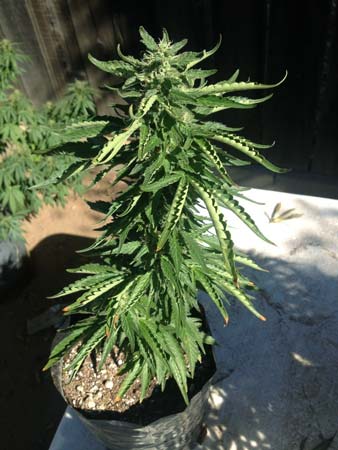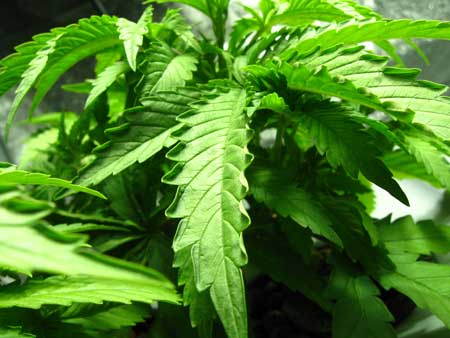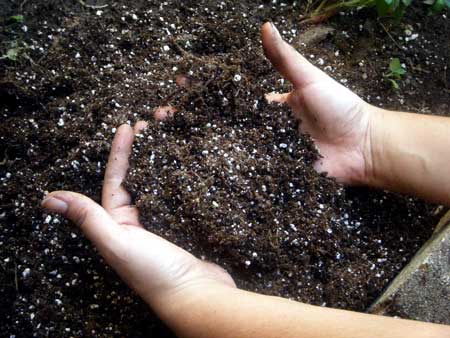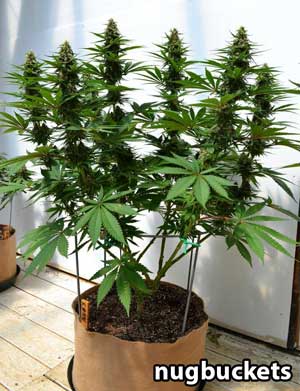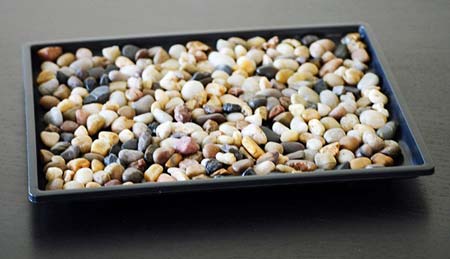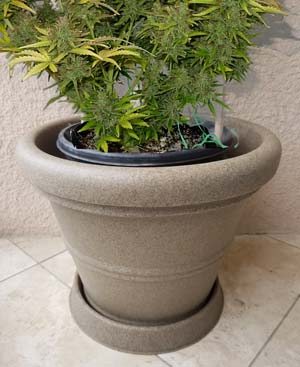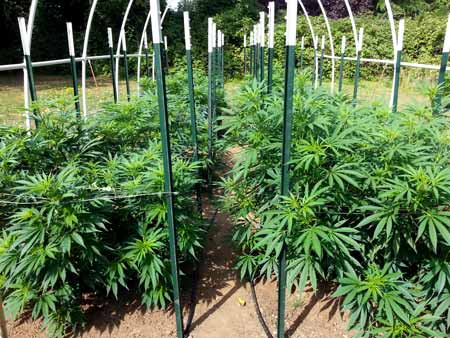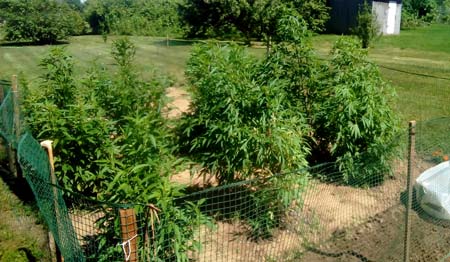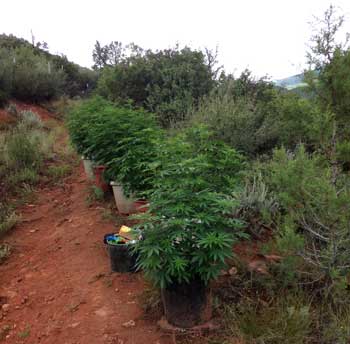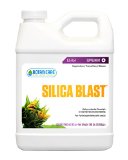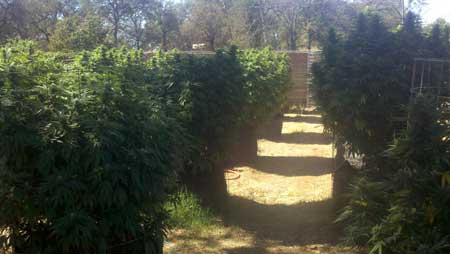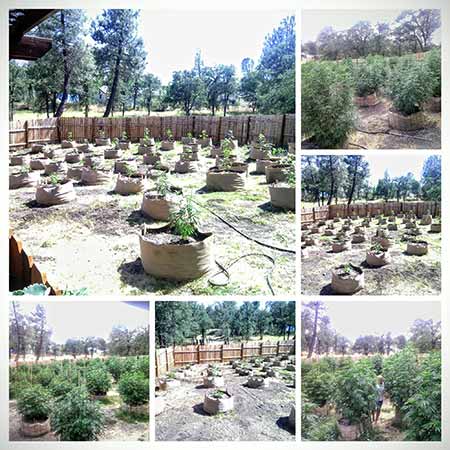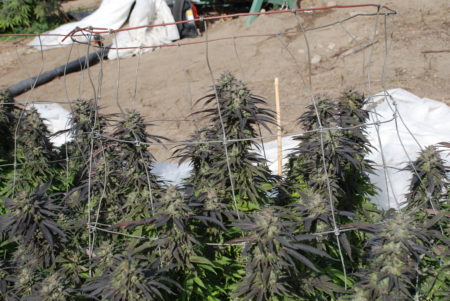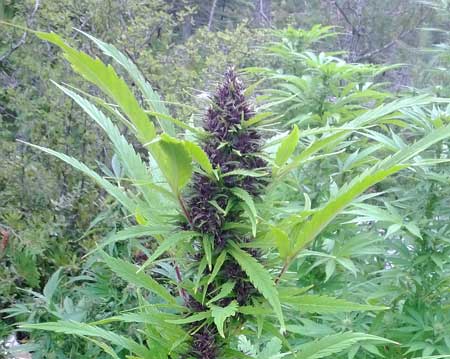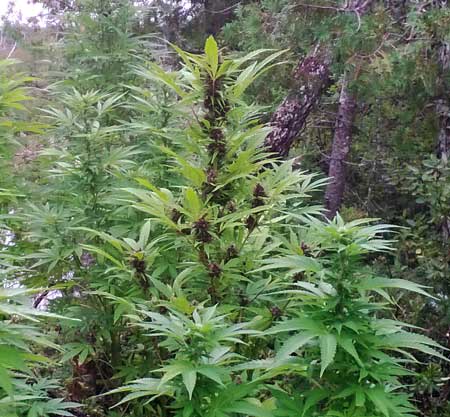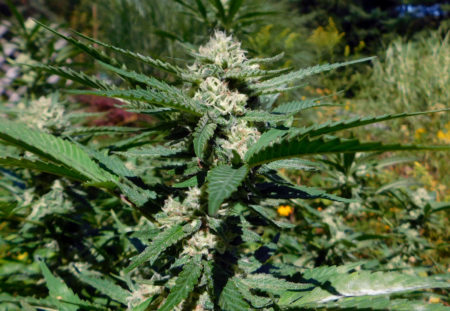by Nebula Haze
How to Save Marijuana Plants During a Heat Wave
Many outdoor growers are dealing with unusually high temperatures during their summer grows, and many of you have written in with pictures of outdoor cannabis plants that are wilting and drooping, with leaves that are twisting, curling, flipping up at the edges, or otherwise getting majorly stressed by the heat.
Heat stressed cannabis plants tend to droop and wilt. The leaves often start cupping, like a little taco or canoe. Sometimes just the edges of leaves tip up. The ends of leaves may curl up or down. Heat-stressed plants can stop growing until conditions improve.
Check out more pictures of heat-stressed plants!
Tips for Growing Cannabis Outdoors on Hot Summer Days
Luckily, there are some things you can do to protect your plant and help it get through a heatwave (or just a long, unusually hot summer). Today I will share some tips for keeping outdoor marijuana plants healthy even when it gets hot outside!
Heat Stressed Leaves Look Unhappy Around the Edges
1.) Never Let Plants Dry Out!
This is one of the most important preventative measures you can take! Make sure plants in high temperatures are always watered! Plants drink a lot in the heat and if they dry out they can die almost overnight. Having a good amount of water will help them be as healthy as possible.
Never let the growing medium completely dry out! It’s important to keep a close eye as the soil can dry out very quickly when it’s hot, especially if it’s also windy or dry!
2.) Don’t Let Plants Get Over-Watered
Conversely, it’s easy for plants to get over-watered in the heat because hot water contains less oxygen. “Over-watering” and droopiness are actually the symptoms of the roots getting enough water but not enough oxygen. Therefore, even though you don’t want the plant to dry out, you also don’t want to soak the soil every day or the plant roots won’t get oxygen. Making sure that your soil has plenty of drainage (for example incorporating 30% perlite into your potting mix) will help prevent symptoms of overwatering.
A loose, airy potting mix will help get plenty of oxygen to plant roots even when it’s hot outside.
Only water when the topsoil is dry up to your first knuckle. Learn how to water plants perfectly every time!
Tan Fabric Smart Pots are light-colored to help reflect away heat, and the fabric container lets air in from the sides, helping provide oxygen and preventing the plant from getting overwatered. Just be aware that fabric pots dry out more quickly than standard hard-sided containers, so make sure to either size up or water a bit more often!
3.) Take Advantage of Evaporative Cooling
Water your cannabis plants in the early morning if possible. As the water evaporates during the day, the power of evaporative cooling helps the roots and the area directly around the plant stay slightly cooler.
To enhance this effect, some growers will take a shallow but wide tray, fill it with something like pebbles or gravel, then fill it with water up until the top. Next, place the plant container on top.
The gravel will hold the container up out of the water, preventing water from being sucked up by the roots through the bottom of the pot (which would cause overwatering), but as the sun evaporates the water puddle it causes the air directly around the plants to be a few degrees cooler.
A “Plant Humidity Tray” is basically a tray full of gravel and then filled with water. Place the plant on top of the tray, and as the water evaporates it cools the air directly around the plant by a few degrees.
Every degree helps when the temperature gets really high.
4.) Keep Roots Cool
Plants with cool roots are more resistant to heat. If growing in a container, keep roots cooler by putting some sort of barrier between the sun and the outside of your pot. For example, place the main container inside another, larger container. Another idea is to dig a hole in the ground and place the whole plant container inside. These strategies protect the sides of the pot from being baked in direct sunlight. Don’t let plants in containers sit directly on ceramic tiles or other materials that tend to heat up a lot under the sun. It can also help to have plants in a bigger container altogether because the extra soil also acts as a buffer for the roots.
Put your main pot inside a bigger container to protect roots from baking in direct sunlight.
Some growers also recommend adding a layer of light-colored mulch (like straw or dried grass clippings) on top of the soil. The light color helps reflect heat back. I personally caution against bark-based mulch for first-time growers, especially those using liquid nutrients (which are very sensitive to pH), because bark can affect pH as it decomposes.
5.) Offer Shade
When the plant is under direct sunlight and the heat gets out of control, try to move the plant indoors or offer shade if possible. Some growers will erect a mesh shade net over the top of their plants during the hottest days of summer if a shadier spot is unavailable.
It’s easy to move plants in containers, but even if plants are in the ground you can offer shade. Erect a frame around them so they’re getting full sunlight most of the time, but when it gets really hot you can throw a shade cloth over the top to give them partial shade without reducing airflow.
Planting cannabis in groups can help offer a little shade from the sides, compared to one plant by itself in an open field.
Whatever you do, make sure plant is not put in the dark during their day period! It should still be getting some amount of light, even if it’s just a sunny window or a single light bulb. If you mess up the plant’s circadian rhythms by keeping them in the dark during their normal day period, it can stress them out further.
6.) Breezy Spot If Possible
If the plant can be moved somewhere slightly breezy (the leaves or stems shouldn’t be waving around, but a gentle leaf rustling is good), that is better than sitting in stagnant air. Sometimes different parts of your yard or grow area are more suitable than others, so it can help to think about whether a slightly different placement may be better for your plant.
That being said, don’t leave cannabis plants totally exposed or put them somewhere they’ll get beat up by the wind!
This is on the side of a hill, which is relatively breezy while still getting a lot of sun. The surrounding plants help shield the plant from strong winds as well as offer some protection and shade. Plants that are grouped together often perform better than a single plant scorching in the sun by itself. It can help to move plants around and see if they perform better in some places than others.
7.) Seaweed Kelp Extract
There are numerous studies showing that seaweed kelp extract is beneficial for heat-stressed plants when used as a supplement. Seaweed kelp extract (available as a liquid or powder) has been shown to increase yields, growth rates, and heat resistance in plants experiencing environmental stress.
Kelp naturally contains lots of trace elements and minerals that have protective properties for plants. Studies have shown that supplementing with kelp can increase plant yields, growth rates, and heat/drought resistance for many species of plants.
Besides protecting against heat, kelp supplements may also enhance seed germination, increase uptake of plant nutrients, and give more overall resistance to frost and fungal diseases.
8.) Humic Acid Supplements
Humic acids are naturally found in the soil, but adding extra can be beneficial. Plant supplements for humic acid are usually derived from leonardite, a substance that is mined near the surface of lignite deposits (lignite is sedimentary rock that formed over millions of years from compressed peat). It is a waxy, brown substance.
Humic acids have protective abilities and can help cannabis plants deal with water stress and drought. Additionally, there is quite a bit of evidence (mostly with many different types of grass, but also with plants like soybeans and corn), that combining humic acid supplements with seaweed kelp extract actually increases the overall effectiveness of both supplements. They may have a synergistic relationship!
Not only do humic acid supplements help protect the plant against water stress, but they may also enhance the heat-resistance benefits of using sea kelp extract!
9.) Silica Supplements
Silica is not a “required” nutrient and your plant won’t suffer from Silica deficiencies. However, supplementing with extra silica offers additional support to plant cell walls. This can help the plant be more resistant to heat and other types of stress.
Botanicare Silica Blast or General Hydroponics ArmorSi are examples of silica supplements made for plants
Whenever possible, try to get a silica supplement from the same manufacturer that makes your base nutrients to help ensure everything works well together.
Silica supplements strengthen plant cell walls. This not only makes cannabis plants more resistant to heat, but it also helps prevent stems from breaking when buds get big and heavy!
10.) Grow in Coco Coir Instead of Soil
When growing outside, most cannabis growers are either going to be in soil or coco coir. They each have their own pluses and minuses, but coco has root-soothing properties that make plants more resistant to over/under watering as well as heat stress. It can be used by itself as a potting mix, or it can be mixed in with soil.
Although you probably don’t want to transplant your plants in the middle of a heatwave (so this is likely not helpful if your plant is already growing), this is something to consider for the future. If you live in an area that always gets really hot during the growing season, you might consider growing in a potting mix that contains some coco coir. The growing experience with coco is very similar to soil, except in coco you must provide nutrients in the water from day 1 (since the coco itself is an inert medium that doesn’t contain any nutrients like soil).
Easy Coco Coir Setup for Two Plants
- Growing Medium: Mother Earth Coco <– 50l is about 13 gallons, so one bag would fill two solo cups to start seedlings, two 1-gallon pots for intermediate stage, then you can do final transplant to two 5-gallon pots to complete the grow.
- Nutrients: Fox Farms Hydro Nutrient Trio + a PH Test Kit. Follow the included nutrient schedule at 1/2 strength. This trio is full of organic goodness and contains all the nutrients your plants need from seed to harvest.
- Containers: Two Solo Cups, Two 1-Gallon and Two 5-Gallon Fabric Pots. Get tan fabric pots if possible (though they’re usually a little more expensive), since they don’t absorb as much heat as the black ones.
- (Optional) Place fabric pots in hard-side containers that are a little bigger. This will protect the sides of the pot from direct sunlight, and will also help prevent the coco from dying as quickly.
- How to Grow Cannabis in Coco Coir
Example of outdoor cannabis plants thriving in coco in tan smart pots!
Bonus: Heat-Resistant Strains
Unfortunately, this doesn’t help growers who already have plants growing outside, but it’s just something to keep in mind for future grows, or if you plan to do a second summer grow.
Each plant is different, and some strains can get really stressed by heat while other plants in the same environment are just fine!
- Sativa, Haze, African and Hawaiian strains all tend to be more heat-resistant since they originate from hot climates.
- In general, auto-flowering strains tend to be relatively sensitive to heat since they originated in Siberia, but some strains have been mixed with heat-resistant strains to make them more suitable for warm climates
- Many Indica plants, which also come from cool climates, can be surprisingly sensitive to the heat.
Example of Heat-Resistant Cannabis Strains
Blue Venom – A G13 Labs strain that is resistant to heat, mold, and other stressors. Produces beautiful bud quality. A cross between two legendary heat-resistant strains, Blue Dream and White Widow. Get the best of both in one!
Frisian Dew – A popular strain because about half of the plants grow buds that turn an incredible, vibrant purple (the other half of plants grow green buds but still beautiful and the effects are just as good). This strain tends to grow the highest percentage of purple buds if plants in the flowering stage are exposed to very sunny weather with many hours of direct sunlight each day, as well as if plants also get cool temperatures at night. This strain is very well suited to outdoor growing, even in northern climates, and is especially resistant to mold.
The plant in the middle with the dark purple buds is Frisian Dew
Durban Poison – This African strain can stand the heat. I like Durban Poison because it produces strong but somewhat unique effects. They tend to be a medium size plant through they can get out of control if you let it stay in the vegetative stage too long. Quick to finish flowering, which is perfect to make sure your harvest comes in before it gets cold and rainy.
Super Lemon Haze – Does best outdoors and plants can get huge with big yields. Can handle the heat, though is less resistant to cold. Citrus smell and captivating effects.
White Widow – Incorporates African and Sativa genetics which help this strain deal with heat. Note: This is a VERY potent version of White Widow. Don’t plan to do anything later. This strain has been developed in the US to capture the effects of the original but in a much higher-THC version.
What about autoflowering strains?
Most auto-flowering strains are ready to harvest 2-3 months from germination, regardless of the sun’s light schedules. This can be helpful for growers in parts of the world that get several months of good weather in summer yet turns rainy or humid early in the fall before most photoperiod plants are ready to harvest. If you know that you’ve got at least 3 months of good weather, you can put auto-flowering plants outside and know they’ll be ready to harvest before the weather gets bad.
However, most auto-flowering strains start to struggle when it gets really hot. Their Ruderalis hemp ancestors originated near the Arctic circle in northern Siberia, and were much better suited to cold than hot. However, here are two auto-flowering strains that still do well in the heat.
- Amnesia Kush Auto – Gets a bit tall, but usually not too bad since it’s an autoflowering strain. Excellent “day” buds with a pleasant mental buzz.
- Zkittles Auto – I’ve grown this one in very hot temperatures and it didn’t seem to mind at all. Quick to harvest, easy to grow, and a smooth happy euphoria.
What are your heat stress secrets? Let us know!
Jump to…
Learn More About Heat and Light Stress
5 Ways to Help Indoor Cannabis Plants Deal with Heat
How to Use Coco Coir as a Growing Medium <– One of the most heat-resistant growing mediums!

